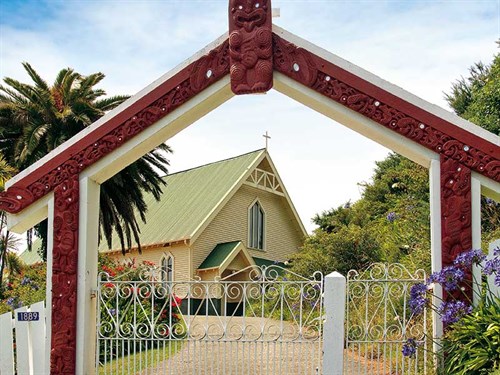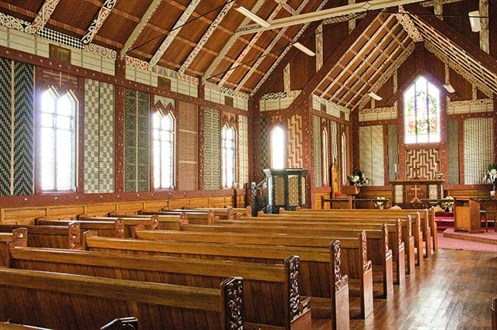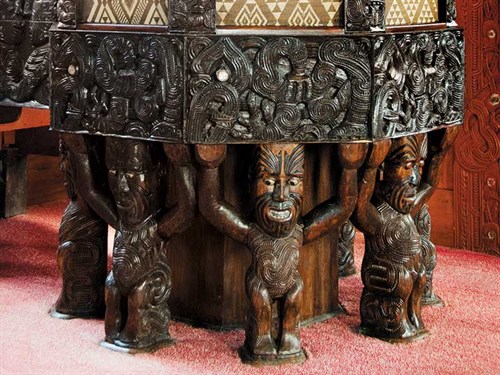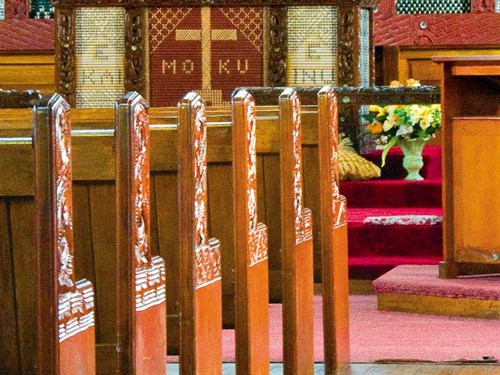Today, you can meet the great Sir Apirana Ngata face-to-face on the front of any $50 note—a position well deserved because the legacies of this fine Maori, who was an influential politician and a guiding star for his people, are manifold.

Among his crusades for the betterment of Maori was the fostering of traditional arts, and, on the East Cape, 150 kilometres north of Gisborne, I discovered one result of these aspirations in a tiny village on the northern bank of the Waiapu River.
Entering Tikitiki
The unaware could easily pass through Tikitiki without a pause, as it’s home to only around 500 people. Yet, on an auspicious day in 1926, 5000 people had thronged into this one-horse town. They’d come for a similar reason that, 90 years later, brought us to a halt on our East Cape odyssey.
The crowd back then included chiefs from all over the North Island, the prime minister, several cabinet ministers, war veterans, and the governor general of the day, Sir Bernard Fergusson. They’d gathered for the consecration of a new church, St Mary’s, which had been built under the patronage of Sir Apirana Ngata.
When we pulled into the town, there was no one around. A few dusty cars were parked outside the RSA, which also acts as bar, a takeaway, and a post office. But St Mary’s Church is just as it was the day it was opened, and it’s one of the most spectacular places of worship in the country.
The Church

St Mary’s was built to commemorate the soldiers of Ngati Porou who died in the First World War. The exquisitely carved and decorated interior symbolically recounts the history of the tribe.

Intricate tukutuku panels are divided by carved pillars inset with paua. Kowhaiwhai designs cover the ceiling. The altar rail is carved in intertwining detail, and the pulpit is presented with patterned figures created in blackened wood and panels of exquisite tapestry.

A striking stained glass window depicts two soldiers kneeling at the feet of Christ (both men were killed in the war), and a tribute is also paid to a man called Taumata-a-Kura, who was captured by Ngapuhi and who, when he eventually returned to Tikitiki in 1834, introduced Christianity to Waiapu.
On the hill behind the church, we found a marble war memorial depicting a Ngati Porou soldier standing on a tall granite plinth. He wears a lemon squeezer hat and holds a rifle at his side, and he gazes eternally towards the east over the lower reaches of the Waiapu River and the heartland of his people.





